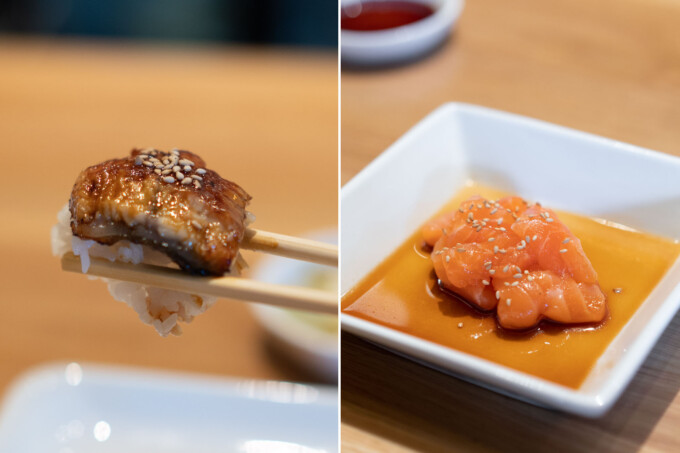
Have you ever felt intimidated about going to a sushi restaurant or are confused about how to order sushi? Learn the basics between nigiri sushi and sashimi with this post and expand your sushi knowledge beyond the popular California roll or spicy tuna roll!
“Sushi” meaning & the most popular types of sushi
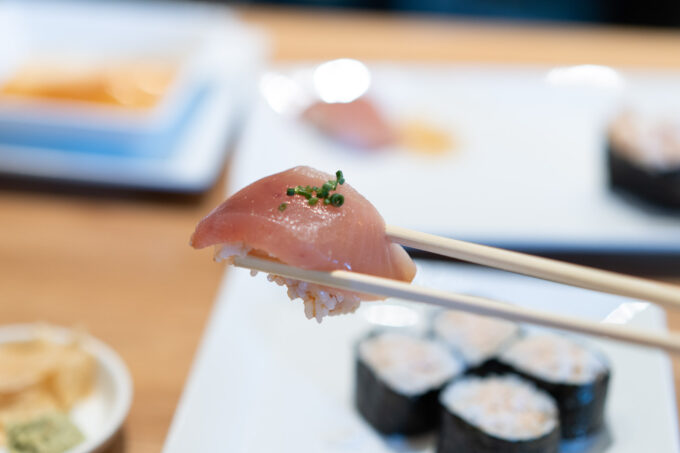
Sushi technically refers to the prepared sushi rice served alongside the fish, however it is used as a blanket term for this Japanese food of raw fish (and cooked) in all its variations. Three of the most common forms of raw fish you might see on a sushi menu restaurant are:
- Nigiri: Nigirizushi means “hand-pressed sushi” in Japanese and is made from molding seasoned rice into a small oval shape and draped with raw fish.
- Sashimi: This is thinly sliced pieces of raw fish or meat.
- Chirashi: Also known as chirashizushi, it’s a type of sushi typically served in a bowl or dish with seasoned vinegared rice and topped with raw fish, tamago (egg), nori, and other vegetables. In Japanese, chirashi translates to “scattered,” which reflects the sashimi on the rice.
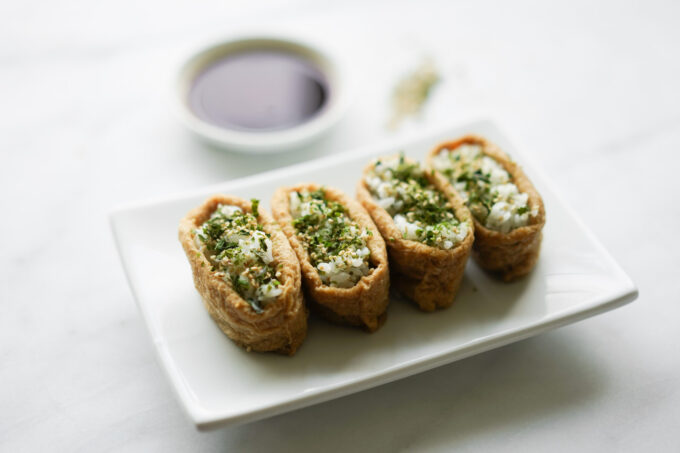
There are so many variations of sushi like inarizushi (sushi rice in a fried tofu pouch) and makizushi (or rolled sushi that is further broken down into temaki, hosomaki, futomaki, and more).
Out of the three, the two most popular ways to eat sushi are nigiri and sashimi. You will consistently find these two varieties in sushi restaurants.
What is nigiri?
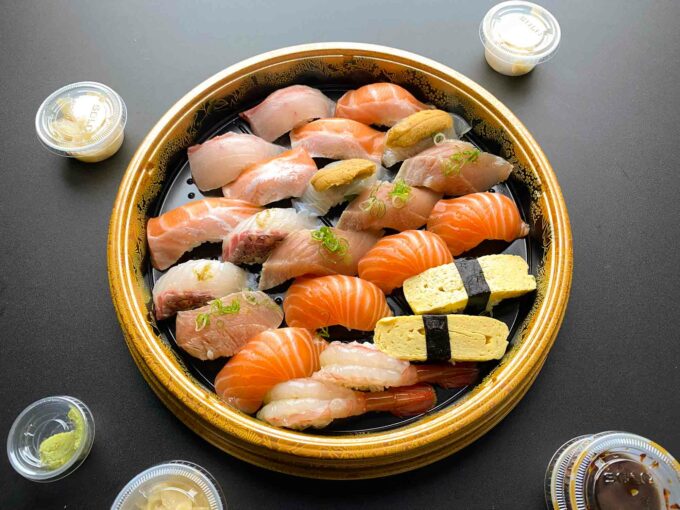
Nigiri, also known as nigirizushi, is very common in many sushi restaurants. It’s pronounced “knee-gi-ree” and is often interchangeable with the general term “sushi.” In Japanese, Nigirizushi translates to “hand-pressed sushi” and reflects the molded oval shape sushi chefs make with vinegared sushi rice, or zumeshi.
Raw or slightly cooked fish is draped over the rice, and often the nigiri is garnished with wasabi paste, soy sauce, ponzu, salt, or other items like shiso leaves, depending on the fish. There’s also another type of nigiri called gunkanmaki where the rice is wrapped with nori to make a shape that holds other toppings like uni, roe, natto, and other ingredients. It’s almost like a mini nigiri roll.
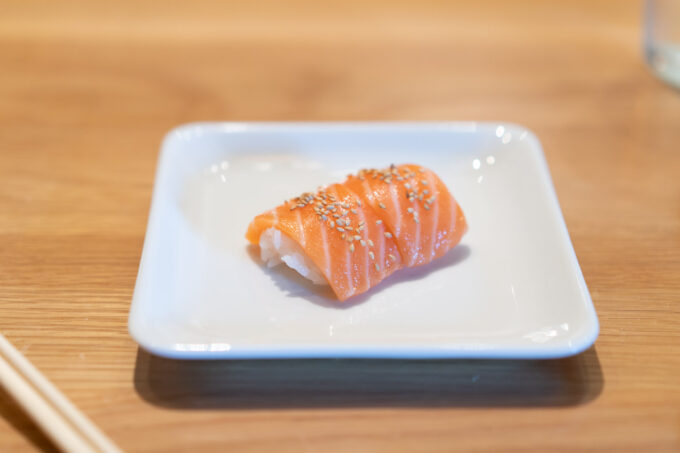
Nigiri typically can be served with raw or slightly cooked (or seared) fish. Some popular types are sake (salmon), otoro (fatty tuna belly), me-dai (red snapper), hamachi (yellowtail), unagi (freshwater eel), uni (sea urchin), hotate (scallop), and ama-ebi (sweet shrimp).
What is sashimi?
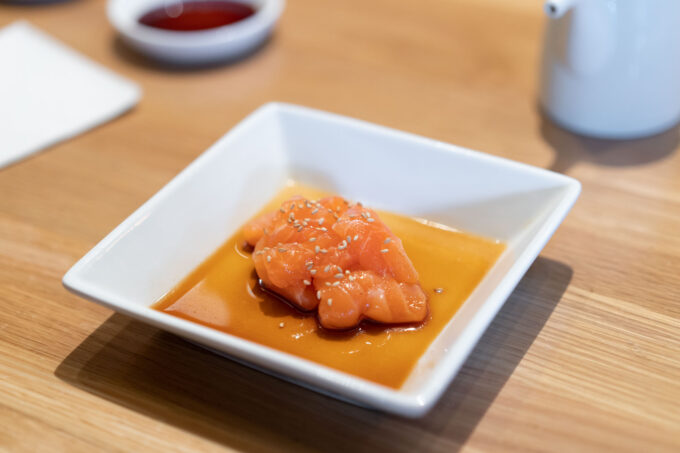
On the other hand, Sashimi is much simpler than nigiri because it refers to thinly sliced pieces of raw fish or meat. It’s pronounced “sah-she-mee,” and it’s derived from the word “kirimi” which means to “cut fish.” Sashimi is often more expensive than nigiri because it comes doesn’t come with rice and has much more fish.
Unlike nigiri where you can use your hands or chopsticks, sashimi is eaten using only chopsticks because it’s served as thinly sliced raw pieces of fish or meat and often paired with soy sauce. Sushi restaurants also serve sashimi with wasabi, gari, and shredded daikon too.
Popular varieties of sashimi include otoro (fatty tuna belly), sake (salmon), shiro maguro (albacore), tako (octopus), hamachi (yellowtail), uni (sea urchin), and wagyu.
What is the difference between nigiri and sashimi?
One of the main differences between nigiri and sashimi is that nigiri is made with rice and sashimi is purely slices of raw fish. However, here’s a quick breakdown on other differences:
| Nigiri | Sashimi | |
|---|---|---|
| Made with rice? | Yes | No |
| Cooked or raw? | Both | Raw |
| Typical ingredients | Seasoned rice, raw or cooked fish, nori | Thinly sliced raw fish or meat |
| Popular varieties | otoro (fatty tuna belly), sake (salmon), me-dai (red snapper), hamachi (yellowtail), unagi (fresh water eel), uni (sea urchin), hotate (scallop), and ama-ebi (sweet shrimp) | otoro (fatty tuna belly), sake (salmon), shiro maguro (albacore), tako (octopus), hamachi (yellowtail), uni (sea urchin), and wagyu |
| Garnish | Wasabi, pickled ginger (gari), soy sauce | Wasabi, pickled ginger (gari), soy sauce, shredded daikon |
| Utensils | Hands or chopsticks | chopsticks |
| Cost | More affordable | Higher-end price |
| Nutrition | More calories due to rice | More protein |









